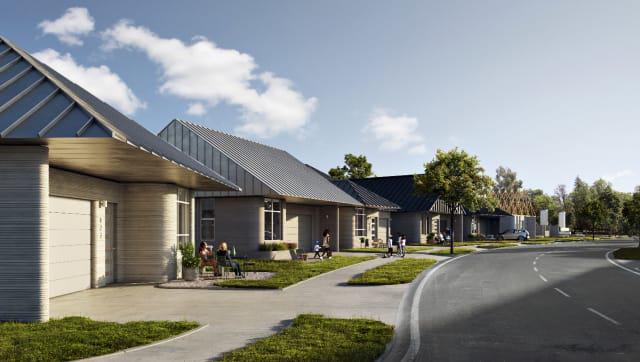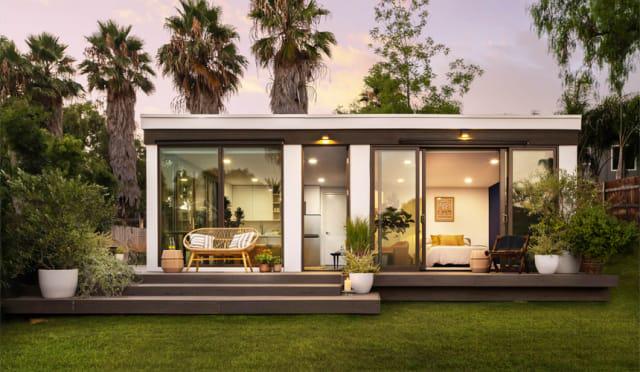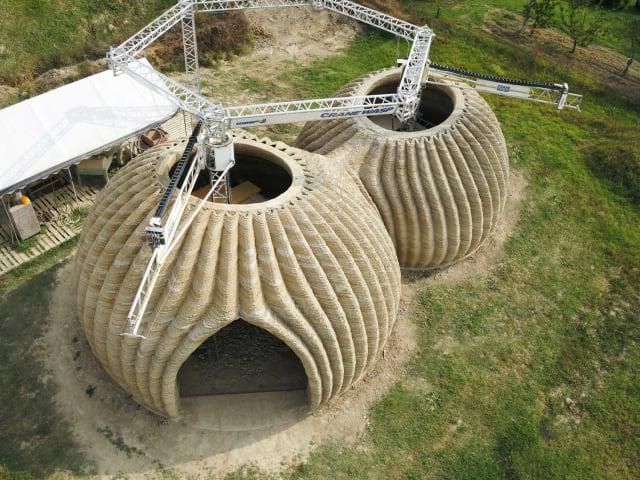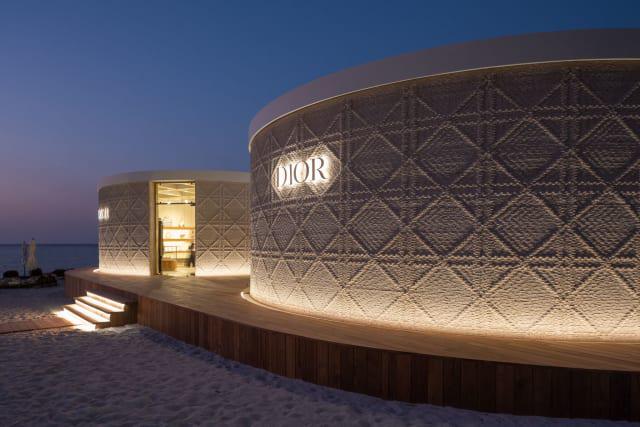Innovations in 3D-printed Buildings
Could 3D printing really be used to solve the global housing crisis? Recent breakthroughs in the technology show we might not be that far off.
When the idea of 3D printing began picking up steam over a decade ago, it conjured up images and thoughts of futuristic buildings and products materializing out of thin air much like a picture being printed from a webpage. It was a widely held belief that 3D-printing technologies would quickly revolutionize the construction, engineering and manufacturing industries, but it has been a slow road to develop 3D printing’s potential, especially as a modern construction technique. To date, 3D printing, or more specifically, additive manufacturing, has more quickly taken hold in the manufacturing industry for rapid prototyping and tool production.
As a widely used technology, 3D printing is still in its infancy, and innovators continue to flock to the space. Since its inception, 3D printing has consistently been viewed as a potential means to solve the global housing crisis and provide shelter for millions of homeless or struggling people all over the world. The world continues to deal with a two-pronged housing crisis, with rising home prices, overcrowding in major cities and a general shortage of affordable, structurally sound homes in developing parts of the world. More than 75 percent of markets in the United States experienced double-digit increases in single-family home prices over the past year, and that trend extends to all corners of the globe. Housing remains one of the largest and most important problems facing humanity.
Housing is a near-impossible problem to solve considering how many factors go into fixing its myriad issues, ranging from policy decisions at the highest levels of government, material and labor shortages, shifting demographics and demand, and where housing is actually needed. Even with all of the political and economic headwinds fueling the housing shortage, 3D printing remains an attractive solution. The ability to erect safe, sturdy dwellings in under a day that provide the minimum requirements for human shelter would go a long way to alleviate poverty in the developing world or create affordable neighborhoods in the most attractive cities where space is at a premium.
Early attempts at 3D printing structures have left something to be desired—not much more than glorified, featureless boxes or pavilions. These types of dwellings, which can be whirled out in under 24 hours for close to $10,000, might do in a pinch for building emergency housing or shelter for the homeless but do not offer the type of space desired by the masses. Real breakthroughs in 3D printing of buildings will come when entire neighborhoods full of desirable homes can be built.
After years of trying, it appears that breakthrough is close.
Watershed Moments in Texas
Austin, Tex., one of the hottest housing markets in the United States, is becoming a sort of proving ground for 3D-printed homes. The city is on the rise and beginning to rival Silicon Valley in terms of tech talent. Austin-based company ICON has already built several stunning homes with partner 3Strands and is teaming up with construction powerhouse Lennar to build an entire neighborhood of 3D-printed homes.
When the idea of 3D printing began picking up steam over a decade ago, it conjured up images and thoughts of futuristic buildings and products materializing out of thin air much like a picture being printed from a webpage. It was a widely held belief that 3D-printing technologies would quickly revolutionize the construction, engineering and manufacturing industries, but it has been a slow road to develop 3D printing’s potential, especially as a modern construction technique. To date, 3D printing, or more specifically, additive manufacturing, has more quickly taken hold in the manufacturing industry for rapid prototyping and tool production.
As a widely used technology, 3D printing is still in its infancy, and innovators continue to flock to the space. Since its inception, 3D printing has consistently been viewed as a potential means to solve the global housing crisis and provide shelter for millions of homeless or struggling people all over the world. The world continues to deal with a two-pronged housing crisis, with rising home prices, overcrowding in major cities and a general shortage of affordable, structurally sound homes in developing parts of the world. More than 75 percent of markets in the United States experienced double-digit increases in single-family home prices over the past year, and that trend extends to all corners of the globe. Housing remains one of the largest and most important problems facing humanity.
Housing is a near-impossible problem to solve considering how many factors go into fixing its myriad issues, ranging from policy decisions at the highest levels of government, material and labor shortages, shifting demographics and demand, and where housing is actually needed. Even with all of the political and economic headwinds fueling the housing shortage, 3D printing remains an attractive solution. The ability to erect safe, sturdy dwellings in under a day that provide the minimum requirements for human shelter would go a long way to alleviate poverty in the developing world or create affordable neighborhoods in the most attractive cities where space is at a premium.
Early attempts at 3D printing structures have left something to be desired—not much more than glorified, featureless boxes or pavilions. These types of dwellings, which can be whirled out in under 24 hours for close to $10,000, might do in a pinch for building emergency housing or shelter for the homeless but do not offer the type of space desired by the masses. Real breakthroughs in 3D printing of buildings will come when entire neighborhoods full of desirable homes can be built.
After years of trying, it appears that breakthrough is close.
Watershed Moments in Texas
Austin, Tex., one of the hottest housing markets in the United States, is becoming a sort of proving ground for 3D-printed homes. The city is on the rise and beginning to rival Silicon Valley in terms of tech talent. Austin-based company ICON has already built several stunning homes with partner 3Strands and is teaming up with construction powerhouse Lennar to build an entire neighborhood of 3D-printed homes.

An artist’s rendering of the homes that ICON plans to build in Austin, TX. (Image courtesy of ICON Build.)
ICON’s Vulcan is an impressive piece of machinery, measuring over 46 feet long and 15 feet high. It works in tandem with the company’s digital platform, which delivers plans and instructions and works intuitively with real-time data from the field. Materials for printing are delivered by the Magma system that mixes concrete based on current site weather conditions and feeds the printer.
“Construction-scale 3D printing not only delivers higher-quality homes faster and more affordably, but fleets of printers can change the way that entire communities are built for the better,” said Jason Ballard, ICON CEO. “The United States faces a deficit of approximately 5 million new homes, so there is a profound need to swiftly increase supply without compromising quality, beauty or sustainability, and that is exactly the strength of our technology.”
3D Printing for Prefab Homes
Prefabricated homes, or prefab for short, are another favored solution to the housing crunch. The major components of a prefab home are constructed offsite and then transported and erected on-site, accelerating the construction schedule, reducing material and waste and simplifying the construction process. This is another perfect application for 3D printing, where walls and panels can be printed. California-based Mighty Buildings has pioneered a 3D-printing system to construct stunning prefabricated homes.
The panels used by Mighty Buildings have numerous advantages over traditional prefabricated systems. Mighty Buildings produces all of its panels in its factory before delivering to the construction site, cutting down on labor time and costs. The panels themselves are made of the company’s proprietary non-silicate Light Stone Material that hardens rapidly under ultraviolet light, which cuts down on carbon emissions by eliminating the use of typical concrete cement. A home built from these 3D-printed panels saves approximately 2.3 tons of CO 2 emissions, according to Mighty Buildings. The company has a goal to get its carbon footprint to net zero by 2028.
The Mighty Kit System offers numerous advantages over traditional panel systems or 3D-printed concrete walls. Mighty Buildings panels are designed for easy MEP integration, offer customization, and are lightweight and easy for builders to work with. Traditional wood-framed or structural insulated panels are much heavier and do not provide easy installation for MEP systems. Standard 3D-printed concrete has poor thermal performance and offers limited flexibility in the shapes that can be constructed and has extended curing requirements.
In addition to its panel systems that can be used to construct single-family homes, Mighty Buildings also designs and 3D-prints modular dwelling units called Mighty Mods. These can be manufactured in as little time as two weeks and completed on-site in less than a month. Up to 80 percent of the production of the Mighty Mods is automated.

Mighty Buildings manufactures the Mighty Mod, a modular dwelling that can be used for anything from a home office, rental property or gym. (Image courtesy of Mighty Buildings.)
Mighty Buildings is in the planning stages of developing its first neighborhood in Rancho Mirage, Calif. The company will build 15 single-family homes and bills the development as the world’s first community of 3D-printed homes with net-zero emissions. Each property will be on 10,000-square-foot plots and will include electric vehicle charging stations.
Unlocking the Potential of Eco-friendly Materials
Elsewhere on the 3D-printing front, researchers continue to experiment with structural materials that allow them to reduce the carbon footprint of the building. Another added benefit of using 3D printing in construction is that it allows builders to work with more natural materials that are not silicate-based. The CO 2 emissions associated with cement are high but can be virtually eliminated by using natural materials like clay and sand.
Italian 3D-printing player WASP teamed with architect Mario Cucinella to print a home made entirely of clay from a nearby river. The home, referred to as TECLA, is dome-shaped and consists of 350 stacked layers of 3D-printed clay. It was built using WASP’s largest 3D printer, which is specifically engineered for home construction, Crane WASP. The printer features rotating arms with a 50-square-meter printing area. The printer is capable of printing multiple modules at the same time.

WASP’s printers in action building the TECLA in Ravenna, Italy. (Image courtesy of WASP.)
“Together with WASP, we aim at developing an innovative 3D-printed prototype for a habitat that responds to the increasingly urgent climate revolution and the needs of changes dictated by community needs,” said Architect Mario Cucinella. “We need a paradigm shift in the field of architecture that gets closer to the needs of people, thus finding an answer for the ‘Earth’ within the ‘earth’. A collaboration that becomes the union between empathic architecture and the application of new technologies.”
In addition to TECLA, WASP also recently used its technology to construct beachfront pop-up stores for luxury retailer Dior in Dubai. The buildings are made of clay, beach sand and raw fibers.

WASP’s 3D-printed Dior buildings in Dubai. (Image courtesy of WASP.)
“Life is strange,” WASP founder Massimo Moretti wrote. “You start out developing a process to provide a home as a birthright to every human. You work on it for a decade, self-funding all research and development. Then comes Dior, a company that represents the world’s most refined luxury, and they ask you to print their stores, and they offer to finance your development costs.”
A Real Solution to a Very Real Problem
All of these major breakthroughs and pilot projects add up to one crystal-clear fact: 3D printing will be a viable solution to making inroads to solving the multi-faceted challenge of building enough high-quality housing to meet the demands of the earth’s population. The proposed neighborhoods in different parts of the world will show that 3D printing can be used quickly and cleanly without sacrificing any quality. As companies like ICON, Mighty Buildings and WASP begin scaling up and forging more partnerships with legacy homebuilders, 3D printing will only become more prevalent in the construction industry.








